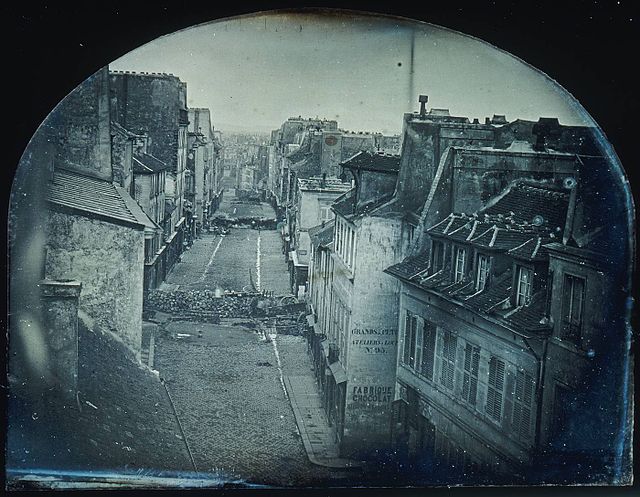The June Days uprising was an uprising staged by French civilians from 22 to 26 June 1848. It was in response to plans to close the National Workshops, created by the Second Republic in order to provide work and a minimal source of income for the unemployed. The National Guard, led by General Louis-Eugène Cavaignac, was called out to quell the rebellion. Over 10,000 people were either killed or injured, while 4,000 insurgents were deported to French Algeria. The uprising marked the end of the hopes of a "Democratic and Social Republic" and the victory of the liberals over the Radical Republicans.
Barricades on rue Saint-Maur, 25 June 1848. These are the first barricades ever photographed.
Painting of a barricade on Rue Soufflot (with the Panthéon behind), Paris, June 1848. By Horace Vernet.
Rue Saint-Maur-Popincourt after the attack by General Lamoricière's troops, 26 June 1848
The French Second Republic, officially the French Republic, was the second republican government of France. It existed from 1848 until its dissolution in 1852.
The chamber of the National Assembly of the Second Republic, in 1848
Louis Napoléon Bonaparte taking the oath of office upon being elected president





